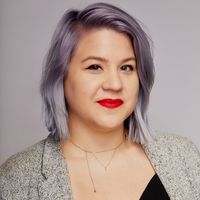
At first glance, I don't really register as your stereotypical athlete. My hair is often an unnatural pastel hue, I rarely leave the house without red lipstick and most of the muscle tone I cultivated through my formative years on the basketball court and track field has slowly faded. In college, while I wasn't as active as my high school days, I occasionally found time to hit the gym, and I considered that daily trek across my school's hilly campus (often made in two-and-a-half feet of snow) to be a workout in an of itself.
Fast forward three-and-a-half years later, and I'm starting my first big girl job in NYC. My days are spent in the cozy confines of an office building, seated at a desk for 8+ hours a day. A 90-minute subway commute to my far-flung Brooklyn neighborhood didn't exactly inspire a trip to the gym most days.
I realize now I wasn't exactly leading the healthiest of lifestyles, which is why it came as no surprise when I started feeling achy. Since tension headaches run in my family, I convinced myself to shrug off the dull pain that started at the base of my neck and moved up into my head and behind my eyes. But as the months passed and my days got busier (and the hours bent over a computer longer), the pain worsened, spreading down into the muscles of my shoulders and upper back. I consulted the chiropractor who eased me through sports injuries in high school, but the adjustment only offered temporary relief; the pain would be back in a matter of hours. Never one to back down from something new, I was ready to try something a little more extreme.
Through a friend of a co-worker, I found myself at the door of Amy Baker, a licensed massage therapist and registered craniosacral therapist, who had performed gua sha, an ancient Chinese therapy touted by the likes of Gwyneth Paltrow and Elle Macpherson, on her to amazing results. The moment I walked into her office, I felt an overwhelming sense of relief. Blame it on her knack for setting the mood, but from the low lighting and gentle instrumental background music to the pleasant scent of lavender essential oil, I knew I was in good hands.
Before beginning the treatment, Baker sat me down to discuss the issues I was experiencing. I walked her through the lifestyle changes I made, including how I spent most of my day hunched over a desk. After assessing my body (and kindly chastising me for my poor posture), she asked if I'd like to try gua sha, her ideal treatment for muscle pain and tightening—what Baker refers to as "congestion." Before I agreed to the therapy, she warned me that while it wouldn't be painful, per se, it certainly wouldn't be pretty. Desperate for relief, I enthusiastically authorized the treatment.
Baker started with what was, without a doubt, the best massage of my life. I consider myself to have a fairly high pain tolerance, so I prefer a very deep massage, and this did not disappoint. I could actually feel her working the knots out of my back with her hands. But that was just the beginning. She retreated for a moment, returning with a tool that she began scraping up and down my back. Since I was face-down on the massage table, I couldn't see anything, but I pictured her rubbing a small, hand-held dish up and down my back. "Gua means to scrape or scratch," she explained, moving the instrument down and away from my spine. "Sha means sand, because the sha rash that comes up is like a sand-like texture right on the skin." Again, she warned me, "This will look dramatic." The sensation was unlike anything I ever experienced before. I wouldn't call it painful, but it was definitely intense, and I don't think it's a treatment that everyone will enjoy. She dug the tool into the muscles of my back, applying pressure above and below my shoulder blades and along my spine, applying pressure until the knots that built up over the past months dissolved. I felt better instantly. As she finished the treatment, I asked to see this "magical" tool that offered so much relief. Baker showed me a bottle cap, slightly larger than the one you'd twist off a bottle of Snapple. I was amazed.
With a final warning as to the visual state of my back, Baker left the room so I could survey the damage and get dressed. I approached the mirror with trepidation and noticed spots of purple and red blooming along the tops of my shoulders. I turned around and for the full effect: bruise-like paths spread down and way from my spine and along the bones of my shoulder blades. Frankly, I looked like I'd been beaten, even though I felt amazing. I felt capable of running a marathon (realistically, jogging around the block a few times). Baker advised against that: "Your body needs to recover," she reminded me. "It needs to have time to stabilize and recover, because [gua sha] is a treatment."
Stay In The Know
Marie Claire email subscribers get intel on fashion and beauty trends, hot-off-the-press celebrity news, and more. Sign up here.
![At first glance, I don't really register as your stereotypical athlete. My hair is often an unnatural pastel hue, I rarely leave the house without red lipstick and most of the muscle tone I cultivated through my formative years on the basketball court and track field has slowly faded. In college, while I wasn't as active as my high school days, I occasionally found time to hit the gym, and I considered that daily trek across my school's hilly campus (often made in two-and-a-half feet of snow) to be a workout in an of itself. Fast forward three-and-a-half years later, and I'm starting my first big girl job in NYC. My days are spent in the cozy confines of an office building, seated at a desk for 8+ hours a day. A 90-minute subway commute to my far-flung Brooklyn neighborhood didn't exactly inspire a trip to the gym most days. I realize now I wasn't exactly leading the healthiest of lifestyles, which is why it came as no surprise when I started feeling achy. Since tension headaches run in my family, I convinced myself to shrug off the dull pain that started at the base of my neck and moved up into my head and behind my eyes. But as the months passed and my days got busier (and the hours bent over a computer longer), the pain worsened, spreading down into the muscles of my shoulders and upper back. I consulted the chiropractor who eased me through sports injuries in high school, but the adjustment only offered temporary relief; the pain would be back in a matter of hours. Never one to back down from something new, I was ready to try something a little more extreme. Through a friend of a co-worker, I found myself at the door of Amy Baker, a licensed massage therapist and registered craniosacral therapist, who had performed gua sha, an ancient Chinese therapy touted by the likes of Gwyneth Paltrow and Elle Macpherson, on her to amazing results. The moment I walked into her office, I felt an overwhelming sense of relief. Blame it on her knack for setting the mood, but from the low lighting and gentle instrumental background music to the pleasant scent of lavender essential oil, I knew I was in good hands. Before beginning the treatment, Baker sat me down to discuss the issues I was experiencing. I walked her through the lifestyle changes I made, including how I spent most of my day hunched over a desk. After assessing my body (and kindly chastising me for my poor posture), she asked if I'd like to try gua sha, her ideal treatment for muscle pain and tightening—what Baker refers to as "congestion." Before I agreed to the therapy, she warned me that while it wouldn't be painful, per se, it certainly wouldn't be pretty. Desperate for relief, I enthusiastically authorized the treatment. Baker started with what was, without a doubt, the best massage of my life. I consider myself to have a fairly high pain tolerance, so I prefer a very deep massage, and this did not disappoint. I could actually feel her working the knots out of my back with her hands. But that was just the beginning. She retreated for a moment, returning with a tool that she began scraping up and down my back. Since I was face-down on the massage table, I couldn't see anything, but I pictured her rubbing a small, hand-held dish up and down my back. "Gua means to scrape or scratch," she explained, moving the instrument down and away from my spine. "Sha means sand, because the sha rash that comes up is like a sand-like texture right on the skin." Again, she warned me, "This will look dramatic." The sensation was unlike anything I ever experienced before. I wouldn't call it painful, but it was definitely intense, and I don't think it's a treatment that everyone will enjoy. She dug the tool into the muscles of my back, applying pressure above and below my shoulder blades and along my spine, applying pressure until the knots that built up over the past months dissolved. I felt better instantly. As she finished the treatment, I asked to see this "magical" tool that offered so much relief. Baker showed me a bottle cap, slightly larger than the one you'd twist off a bottle of Snapple. I was amazed. With a final warning as to the visual state of my back, Baker left the room so I could survey the damage and get dressed. I approached the mirror with trepidation and noticed spots of purple and red blooming along the tops of my shoulders. I turned around and for the full effect: bruise-like paths spread down and way from my spine and along the bones of my shoulder blades. Frankly, I looked like I'd been beaten, even though I felt amazing. I felt capable of running a marathon (realistically, jogging around the block a few times). Baker advised against that: "Your body needs to recover," she reminded me. "It needs to have time to stabilize and recover, because [gua sha] is a treatment." [image id='a4274c6d-c7e7-4980-9930-3d1830c1464d' mediaId='2cee583d-17e6-4c24-850e-fe3f8088f828' share='true' expand='true' loc='C'][/image] What exactly is gua sha, anyway? Beside being, in my opinion, a miraculous healing technique, it's an ancient Chinese medical therapy created to withdraw "cold winds" from the body. Baker explains: "In Chinese medicine, when you have cold or winds enter the body, things tighten up. This cold wind easily enters the body through the back of the neck, so you'll often get neck pain, like people who wake up after we start turning on the air conditioners [for summer] with a stiff neck. Gua sha can pull that cold out." Baker mainly uses the therapy to treat muscle pain and decreased range of motion. Since my initial introduction to the treatment several months ago, I've returned to Baker for gua sha twice: once so she could focus it on my neck, and another so she could work on my lower back. Every time, I've left feeling like a new person—well, more like a the same person in a new body. Now, if only their were an ancient technique that could inspire me to hit the gym every day…](https://cdn.mos.cms.futurecdn.net/pmV3TpyHzFSW2AngzLjKth-320-80.jpg)
What exactly is gua sha, anyway? Beside being, in my opinion, a miraculous healing technique, it's an ancient Chinese medical therapy created to withdraw "cold winds" from the body. Baker explains: "In Chinese medicine, when you have cold or winds enter the body, things tighten up. This cold wind easily enters the body through the back of the neck, so you'll often get neck pain, like people who wake up after we start turning on the air conditioners [for summer] with a stiff neck. Gua sha can pull that cold out." Baker mainly uses the therapy to treat muscle pain and decreased range of motion.
Since my initial introduction to the treatment several months ago, I've returned to Baker for gua sha twice: once so she could focus it on my neck, and another so she could work on my lower back. Every time, I've left feeling like a new person—well, more like a the same person in a new body. Now, if only their were an ancient technique that could inspire me to hit the gym every day…
Julie Kosin is the senior culture editor of ELLE.com, where she oversees all things movies, TV, books, music, and art, from trawling Netflix for a worthy binge to endorsing your next book club pick. She's the former director of audience strategy and entertainment at HarpersBAZAAR.com. When not glued to her laptop, she can be found taking pictures of her dog or haunting used bookstores.
-
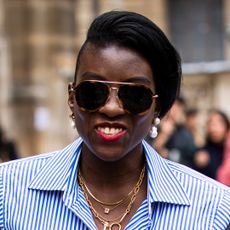 8 Must-Have Staples I'm Stocking Up On During the Sephora and Ulta Sales
8 Must-Have Staples I'm Stocking Up On During the Sephora and Ulta SalesFrom moisturizing lip balm to colorful blush.
By Nikki Ogunnaike Published
-
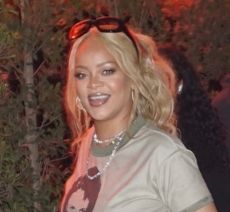 Rihanna's Coachella Outfit Proves More Really Is More
Rihanna's Coachella Outfit Proves More Really Is MoreShe's "Anti" minimalism at festivals.
By India Roby Published
-
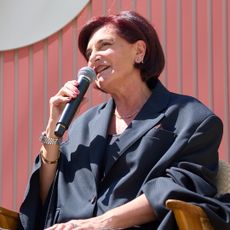 Moleskine's Daniela Riccardi on Harnessing the Power of the Written Word
Moleskine's Daniela Riccardi on Harnessing the Power of the Written Word“It’s not just a notebook—it’s a book that has yet to be written."
By Danielle Campoamor Published
-
 The 32 Best Hair Growth Shampoos of 2024, According to Experts
The 32 Best Hair Growth Shampoos of 2024, According to ExpertsRapunzel hair, coming right up.
By Gabrielle Ulubay Published
-
 The 20 Best Hair Masks for Damaged Hair, According to Experts and Editors
The 20 Best Hair Masks for Damaged Hair, According to Experts and EditorsHealthy strands, here we come!
By Gabrielle Ulubay Last updated
-
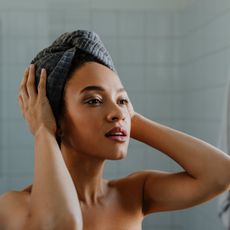 How Often You Should Wash Your Hair, According To Experts
How Often You Should Wash Your Hair, According To ExpertsKeep it fresh, my friends.
By Gabrielle Ulubay Published
-
 The 11 Best Magnetic Lashes of 2023
The 11 Best Magnetic Lashes of 2023Go ahead and kiss your messy lash glue goodbye.
By Hana Hong Published
-
 Beauty Advent Calendars Make the Perfect Holiday Gift
Beauty Advent Calendars Make the Perfect Holiday GiftThe gift that keeps on giving.
By Julia Marzovilla Last updated
-
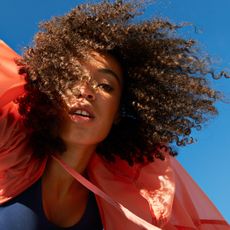 The 18 Best Natural Hair Products in 2023
The 18 Best Natural Hair Products in 2023Remember: Your curls are your crown.
By Gabrielle Ulubay Published
-
 The 9 Best Hot Rollers for the Curls of Your Dreams
The 9 Best Hot Rollers for the Curls of Your DreamsThis is how we roll.
By Samantha Holender Published
-
 The 12 Best Cream Eyeshadows, According to Makeup Artists
The 12 Best Cream Eyeshadows, According to Makeup ArtistsThe best part? They’re so easy to apply.
By Samantha Holender Published